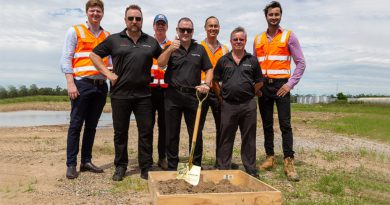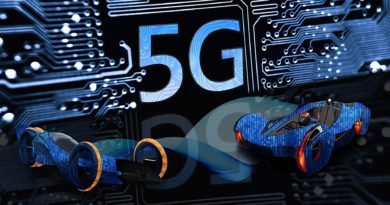Volkswagen launches electric Kombi: ID. Buzz
Volkswagen Passenger Cars and Volkswagen Commercial Vehicles have given ID. Buzz and ID. Buzz Cargo their world premiere in Hamburg, Germany. With Europe’s first all-electric bus and transporter range, Volkswagen said it is providing a solution to sustainable and CO2-free mobility. According to Volkswagen, ID. Buzz comes with the latest ID. software and sets new standards in its segment with the latest systems and functions for safety, comfort and charging.
Chairman of the Board of Management of Volkswagen Passenger Cars, Ralf Brandstätter, said ID. Buzz is a genuine icon for the electric era, describing it as a car the likes of which only Volkswagen can build. “In the 1950s, the Volkswagen Bulli (Kombi) stood for a new feeling of automotive freedom, independence and great emotion. The ID. Buzz picks up on this lifestyle and transfers it into our time: emission-free, sustainable, fully networked and now ready for the next big chapter: autonomous driving. With this car, we are bringing together the core themes of our Accelerate strategy in one product for the first time,” added Brandstätter.
Chairman of the Board of Management of the Volkswagen Commercial Vehicles Brand, Carsten Intra, said both versions of the ID. Buzz are pioneering in terms of their sustainability: their manufacture and shipping has a carbon-neutral footprint. We are also using recycled synthetic materials and the interior is completely free of any real leather. The ID. Buzz will also be used for future autonomous mobility concepts such as ride pooling – an e-shuttle service of [VW] group subsidiary MOIA that can be booked via an app. The electric Bulli is thus also a part of the future of inner-city transport,” added Intra.
Like all models in Volkswagen Passenger Car’s ID. family, ID. Buzz, is based in engineering terms on the Group’s Modular Electric Drive Kit (MEB). The world’s first scalable mass production platform for all-electric cars provides the cross-brand basis for all sorts of different models and segments. Its architecture allows for development of software and technology that benefits new models such as ID. Buzz, and other models already delivered, by means of over-the-air updates.
The new model line’s assistance systems enhance ease of driving and safety. Included as standard in ID. Buzz and ID. Buzz Cargo is the ‘Car2X’ local warning system, which uses signals from other vehicles and the transport infrastructure to spot hazards in real time. Front assist emergency braking is also standard, along with lane assist in the MPV version. With new software, new assistance functions will also make their way into the ID. family. Travel Assist with swarm data, which facilitates partially automated driving across the entire speed range, is available as an option and, for the first time, assisted lane-changing on the motorway. Also new is the memory function for automated parking on a previously saved route.
ID. Buzz and ID. Buzz Cargo will launch across Europe with a 77-kWh battery (gross energy content: 82 kWh). It provides current to a 150-kW electric motor, which – as the flat engine once did in the T1 (Kombi) – drives the rear axle. The position of the battery, integrated deep down in the sandwich floor, and the lightweight electric drive system result in a good distribution of weight and a low vehicle centre of gravity. Both factors optimise the handling and agility. The lithium-ion battery can be charged from wall boxes or public charging stations using 11 kW alternating current (AC). Via a CCS plug connector at a DC rapid-charging station (direct current) the charging power increases up to 170 kW. When charged in this way, the battery charge level rises from five to 80 per cent in about 30 minutes. Using the latest ID. software, the model line will also offer the ‘plug and charge’ function in future. Via this function, ID. Buzz authenticates itself at compatible DC rapid-charging stations via the charging connector using the ISO 15118 standard. It also exchanges all necessary data with the charging station in this way. Bidirectional charging enables ID. Buzz to feed unneeded energy from the battery into the customer’s home network (vehicle-to-home). The power transfer and communication take place via a special DC bi-directional wall box.
The visual frame around these future-oriented technologies is formed by the unique design of ID. Buzz. Head of Volkswagen Design, Jozef Kabaň, said T1 enabled people to gain mobility and freedom and with ID. Buzz, the company is transferring T1 DNA to the era of electric mobility.
“In the T1 you are practically sitting on top of the front axle – there’s no front overhang. For all its safety relevance and technology, the ID. Buzz has super short overhangs. The ID. Buzz is timeless, sustainable and yet also extremely functional – that makes it unique,” added Kabaň.
Another feature typical of the model line is the iconic front with its V-shaped panel between the charismatic LED headlights, along with optional two-tone paintwork.
ID. Buzz drivers and passengers experience the new Kombi feeling in a spaciously designed interior. Typically Kombi, the layout is clear, the concept well considered and use of space optimal. In the lounge-like ambience of the MPV version, five people have ample room for travelling and for their luggage (1,121 litre capacity). If the second row of seats is folded down, the load capacity increases to up to 2,205 litres. Two or three seats up front, as the customer desires, and a fixed partition separating off the 3.9 m3 cargo space are distinctive features of ID. Buzz Cargo. The zero-emission cargo version can take two loaded euro pallets, loaded in transversely.
ID. Buzz and ID. Buzz Cargo have a long wheelbase of 2,988 mm, roughly the same as that of the current T6.1. The length of both versions is 4,712 mm. By virtue of what, in relation to the overall length, is a very long wheelbase, optimal use is made of the vehicle footprint. Including roof aerial, the two versions of ID. Buzz measure, dependent on specification, are 1,937mm, or 1,938mm in height. At 1,985mm, the new model is 81mm wider than a T6.1, while the turning circle of 11.1 metres is unusually small.
Design already followed function in the case of T1, and this central tenet of automotive construction applies to the design of ID. Buzz. The iconic clear forms are accompanied by outstanding aerodynamics: ID. Buzz has a drag coefficient of 0.285 – 0.29 for ID. Buzz Cargo. This reduces energy consumption and increases range.
The ID. Buzz model line is being produced by Volkswagen Commercial Vehicles at its main plant in Hannover. The majority of the electric drive system modules being supplied to the plant for this purpose will also be made in Germany by the group’s Components division. Since 2022, the Hannover plant has been one of the group’s high-tech locations for the production of all-electric vehicles and once produced a Kombi model line.
ID. Buzz and ID. Buzz Cargo will come to market in the first few European countries this autumn, with advance sales due to start in May. Volkswagen of America will also initiate the comeback of the so-called microbus in the USA and Canada.















